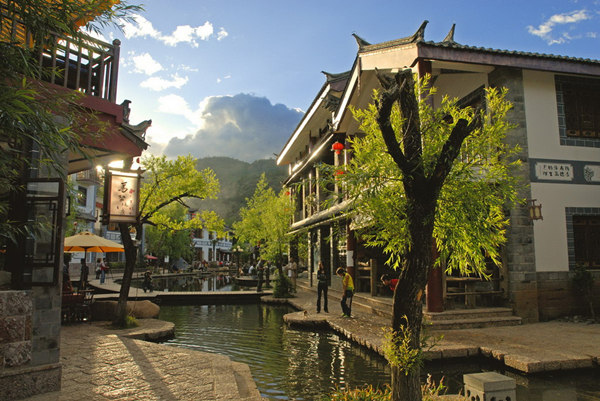
Shuhe old town
 Shuhe is called “Shaowu” in the Naxi ethnic language meaning “a village at the foot a lofty peak”. It is 4 kilometers away from the old town of Lijiang.
Shuhe is called “Shaowu” in the Naxi ethnic language meaning “a village at the foot a lofty peak”. It is 4 kilometers away from the old town of Lijiang.
As one of the habitats of the Naxi ancestors in Lijiang area, Shuhe used to function as an important stop on the Ancient Tea and Horse Trail (Road). The prosperous trades along the Tea and Horse Trail made various necessities sell quite well.
In the Ming Dynasty (1368-1644), Chieftain Mu of Lijiang managed to employ from Jiangnan Area (China’s south part of Yangtze; i.e. Zhejiang and Jiangsu provinces, etc) a great number of craftsmen who settled down in Shuhe to make it (Shuhe) a famous “Cobblers’ Village”. Products at that time were mainly leather shoes, saddle, fur clothing, iron wares and so on.
Today, Shuhe is the favourite of many travellers to Lijiang. One of the highlight in the old town is the Naxi ethnic traditional houses some of which are family style inns.



